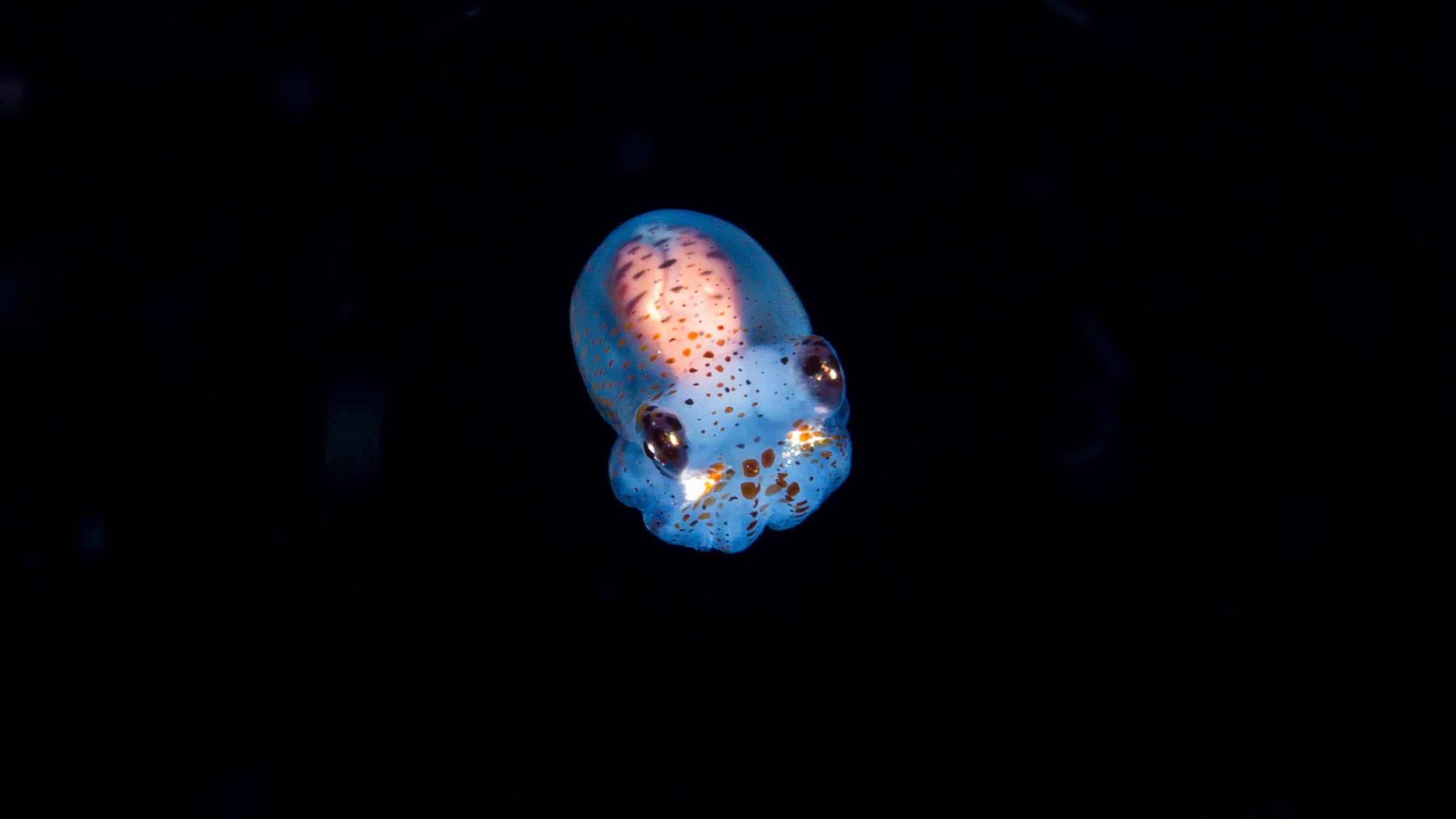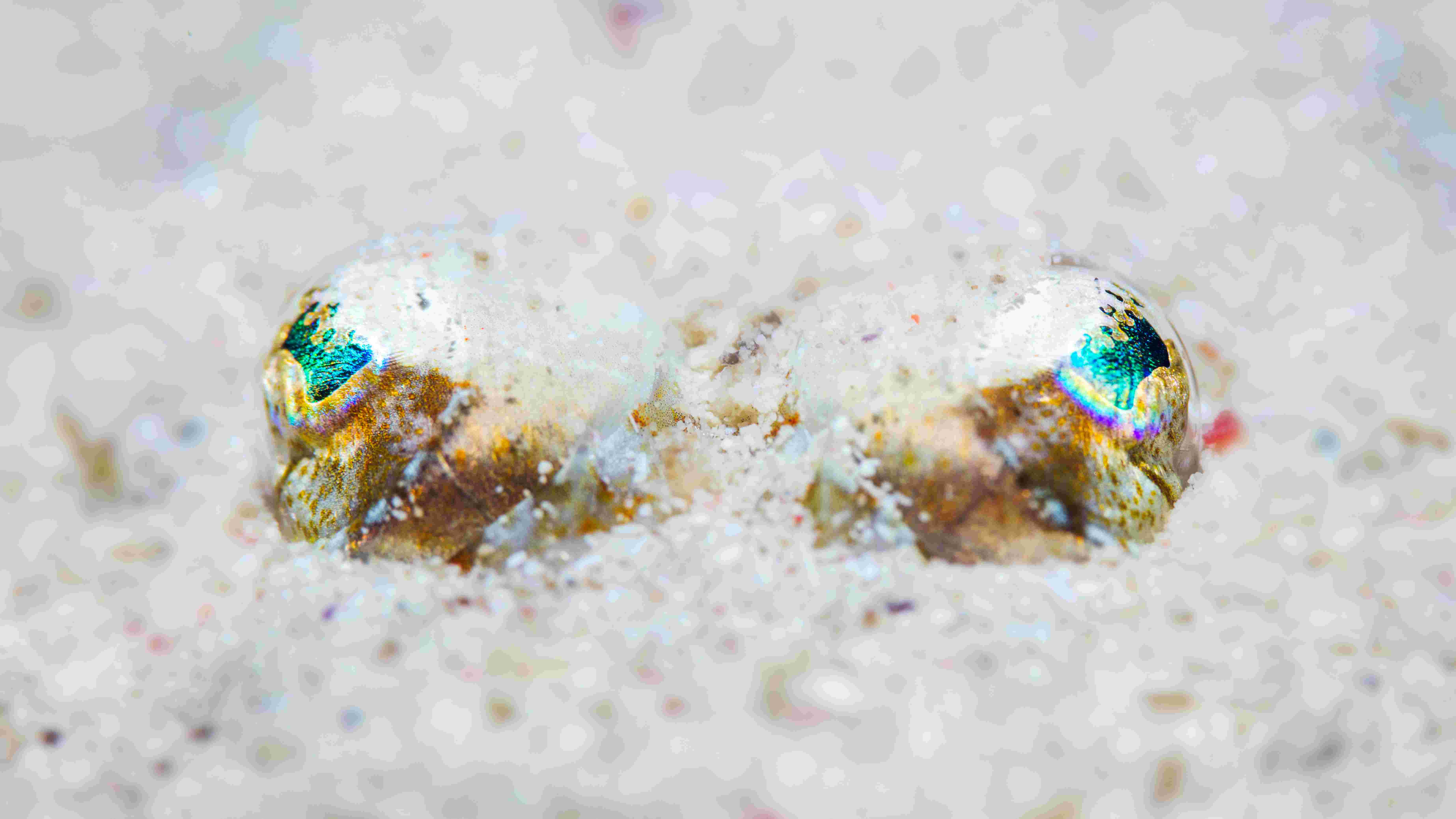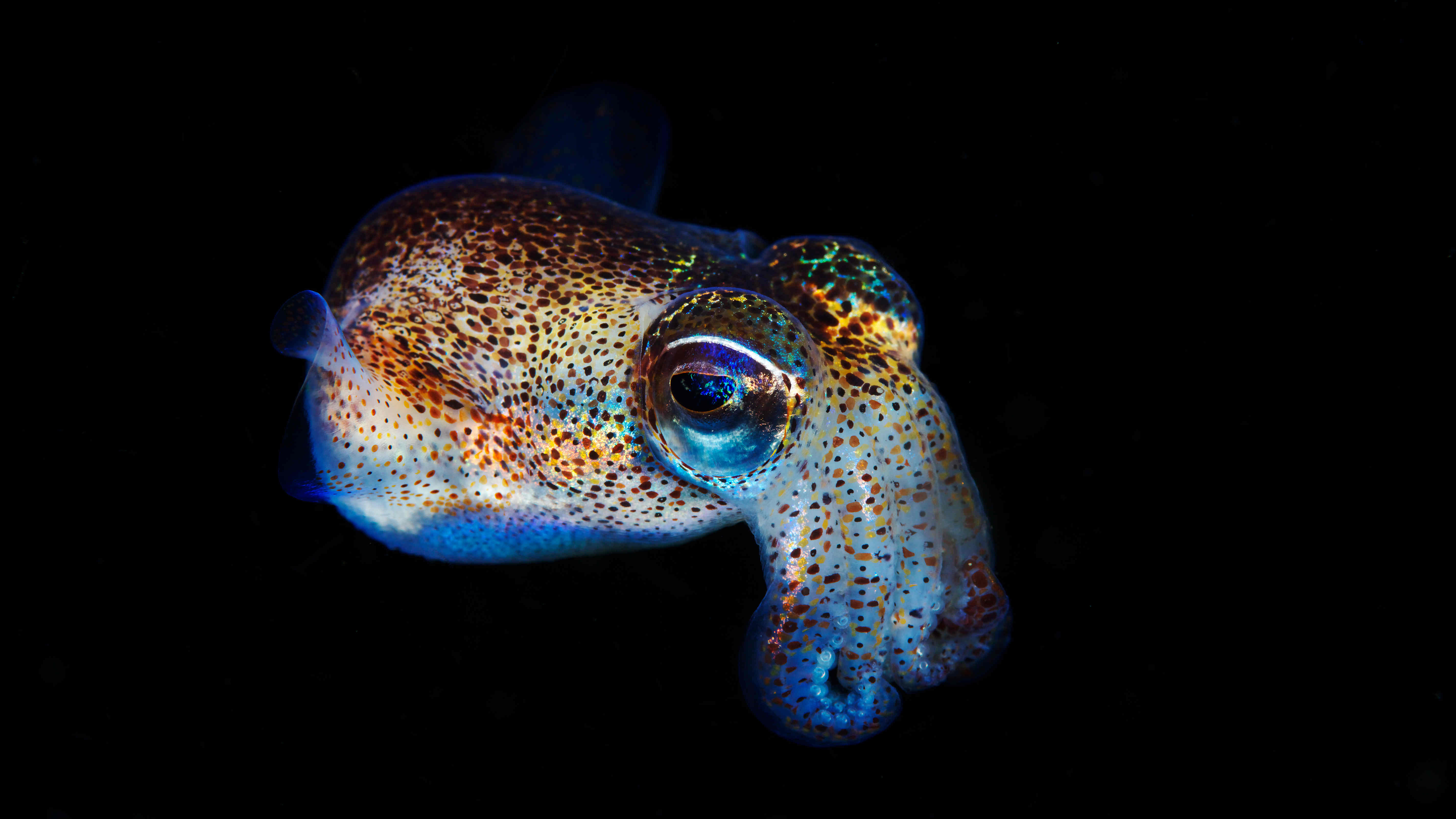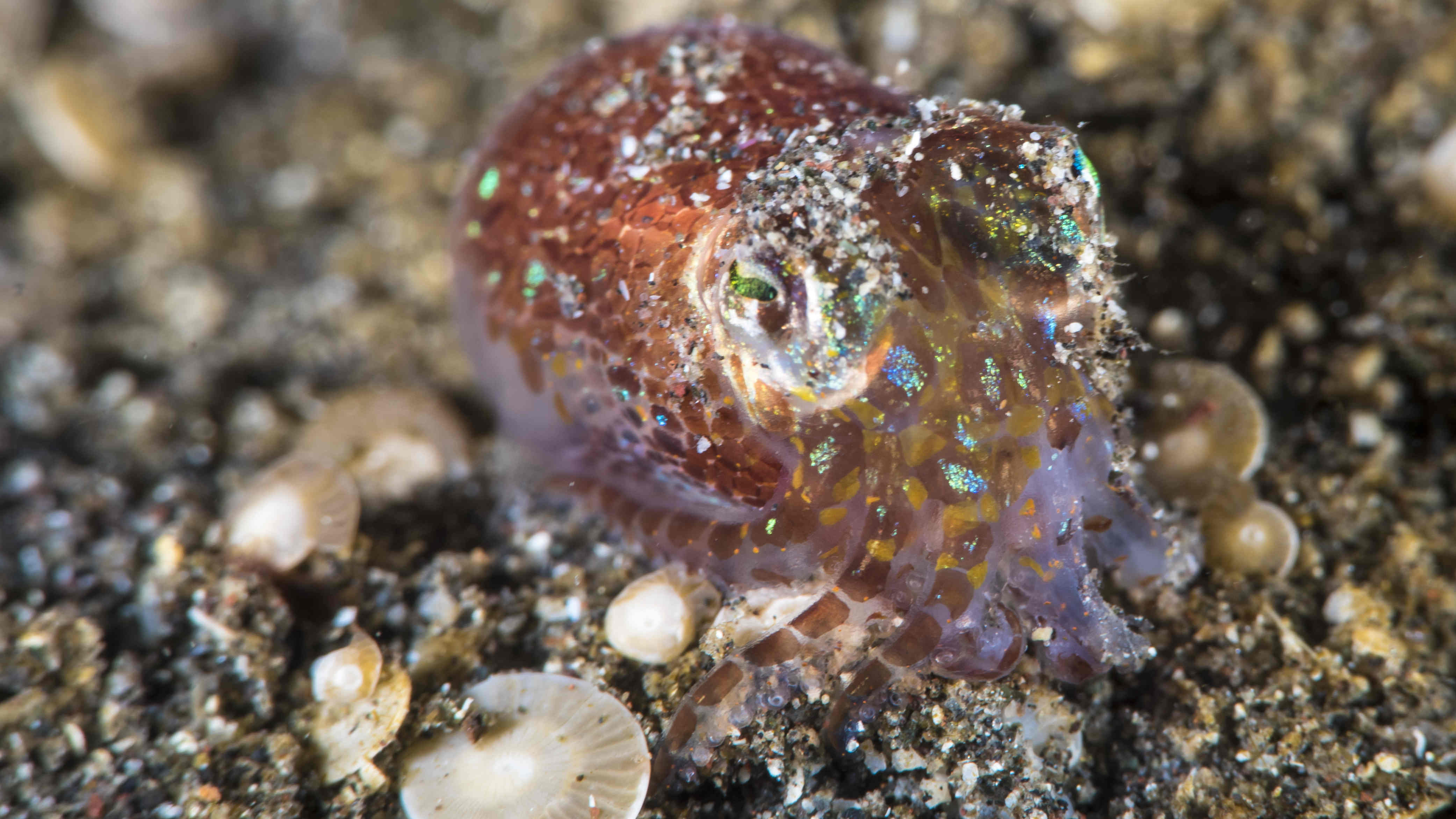There are many unique creatures living under the water, one of them is the glowing bobtail squid. Bobtail squids are one of a handful of marine animals that can produce fluorescent light, but they're not born with this ability. Instead, the fluorescent light is produced by a bacterium, vibrio fischeri, living in their bodies. This bacterium and the bobtail squid establish a symbiotic relationship that benefits them both.

Bobtail squids are about 5 cm in length. /VCG Photo
Bobtail squids are about 5 cm in length. /VCG Photo
The tiny bobtail squids can be found mostly in the shallow coastal waters of the Pacific Ocean and some parts of the Indian Ocean and Atlantic Ocean. As big as a thumb, they only have an average length of about five centimeters. Because of their excellent camouflage skills, it is difficult to locate them. During the day, they love to bury themselves in the sand. At night, they will glow to hide their own shadows by blending in with the moonlight, thereby protecting themselves against predators.

A bobtail squid buries itself in the sand. /VCG Photo
A bobtail squid buries itself in the sand. /VCG Photo
In order to glow at night, bobtail squids seek glowing bacteria. Vibrio fischeri is a rod-shaped bacterium that usually exists in a free-living planktonic state or in the bodies of marine animals. The squids provide food to the bacteria, such as amino acid and sugar, to help them repopulate.
More interestingly, bobtail squids can adjust the brightness of their glow by controlling the number of bacteria on their bodies. In the morning, when they are about to rest, they dislodge most of the bacteria to stop glowing. When the bobtail squids are asleep, the remaining bacteria will start to repopulate. The glowing bacteria act like a daily clock: when they're at full capacity, the bobtail squids will wake up and begin to be active at night.

The glowing bacteria, vibrio fischeri, live in the light organ in the squid's mantle. /VCG Photo
The glowing bacteria, vibrio fischeri, live in the light organ in the squid's mantle. /VCG Photo

Bobtail squids can adjust the brightness of glow by controlling the number of vibrio fischeri in their bodies. /VCG Photo
Bobtail squids can adjust the brightness of glow by controlling the number of vibrio fischeri in their bodies. /VCG Photo
It is amazing to see how marine animals and bacteria can work together to benefit each other. In most people's mind, a bacterium is a scary living organism that can make us sick or even kill us. However, some bacteria like vibrio fischeri actually play an important role in animals' life. It is hard to imagine how the life of bobtail squids would be without the glowing vibrio fischeri.
Micro earth
People often find it hard to understand the presence and role of microbes in their environment and daily lives. They are hard to see, but are everywhere. In this series, CGTN focuses on one of the smallest organisms in nature, and explores how these powerful organisms can either save or destroy us.
(All photos via VCG.)
(If you want to contribute and have specific expertise, please contact us at nature@cgtn.com)